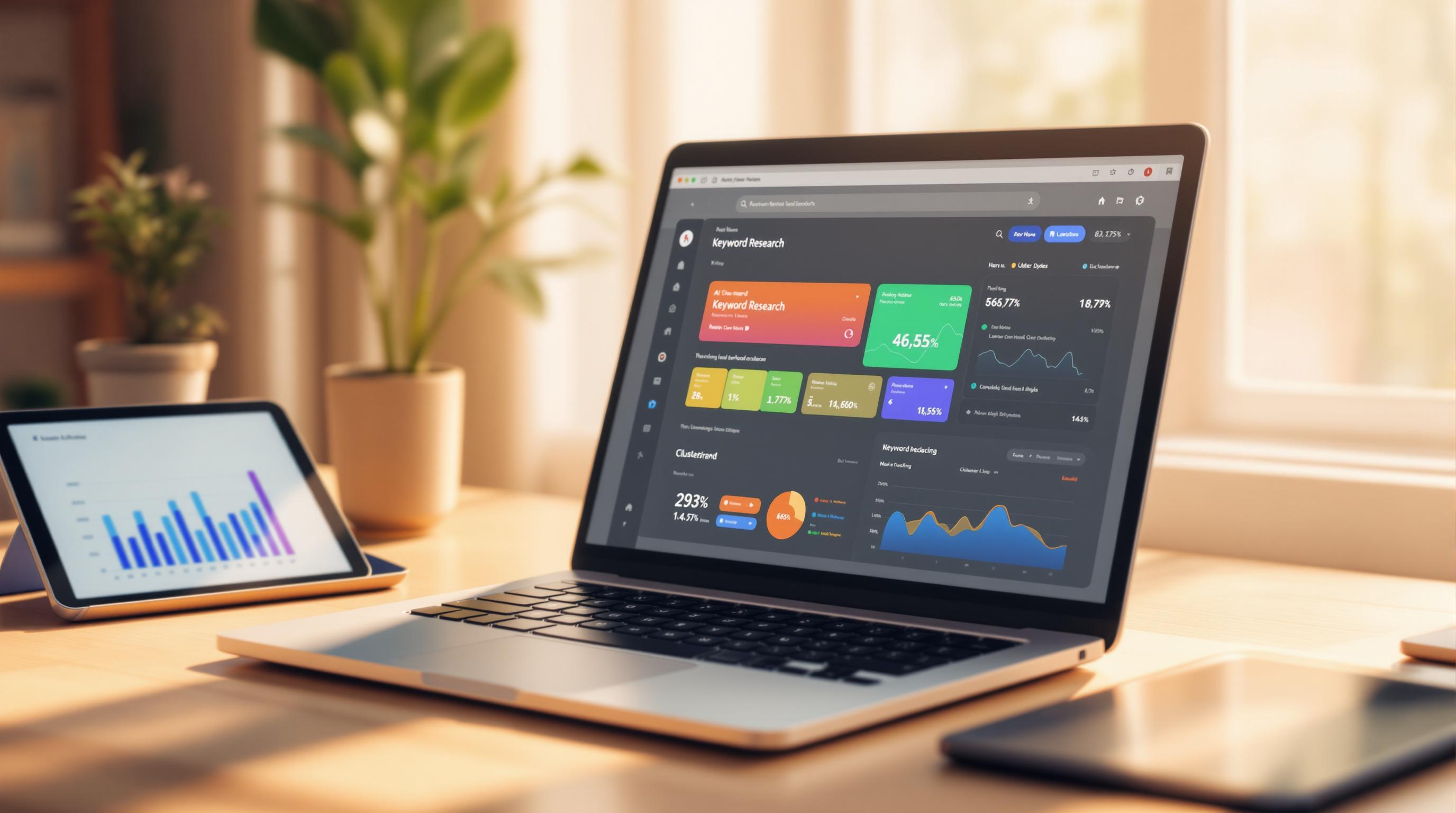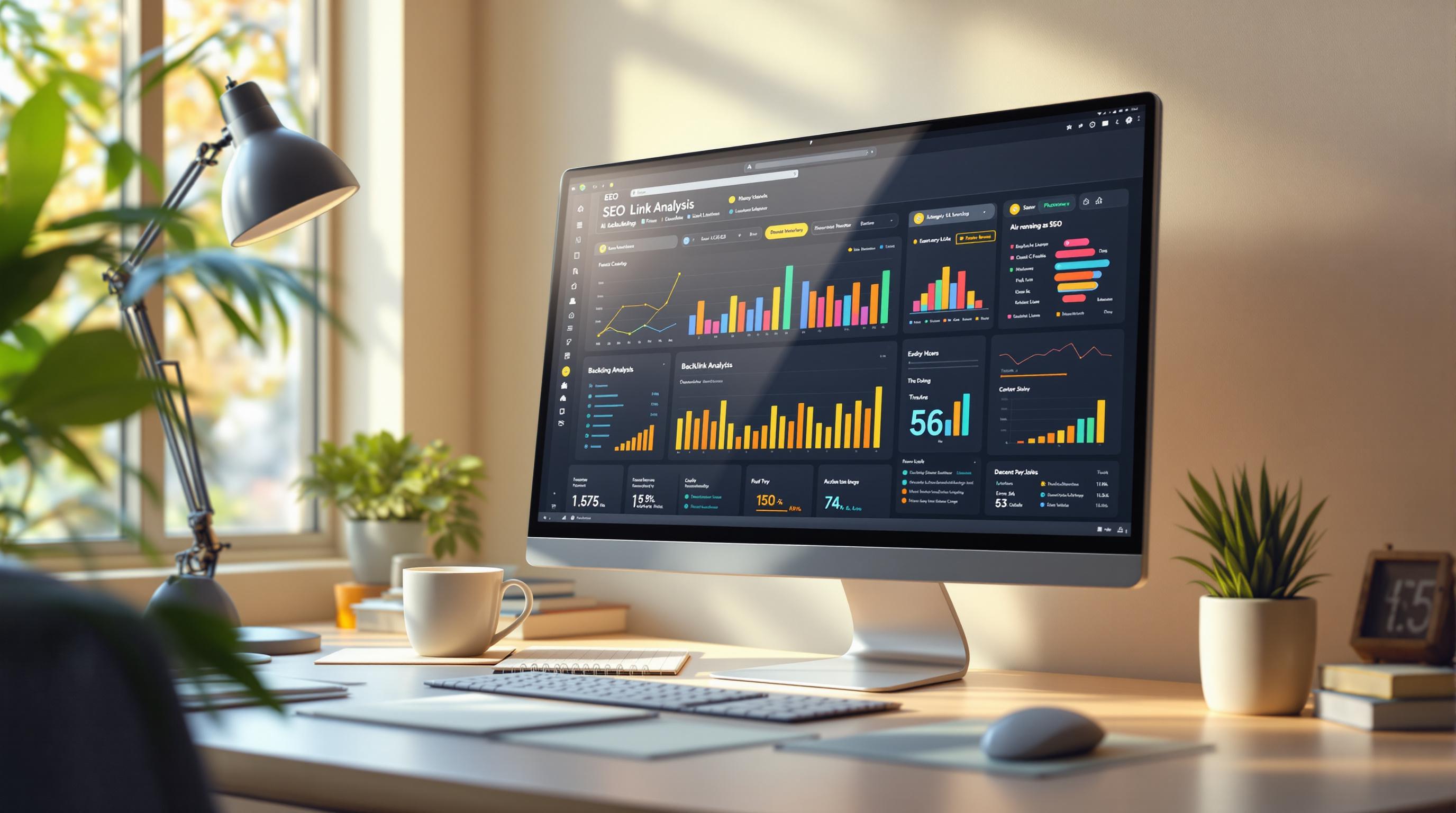Real-time data helps you quickly adapt your SEO strategy by providing instant insights into user behavior, search trends, and technical issues. It ensures your content stays relevant, your site performs well, and your rankings improve. Here’s what you can achieve:
- Instant Adjustments: Respond to search trends and algorithm changes immediately.
- Keyword Optimization: Spot trending keywords and align your content with user intent.
- Technical Fixes: Detect and resolve site issues like slow loading times or 404 errors in real time.
- Content Updates: Identify gaps and improve content to match current user needs.
| SEO Focus | Traditional Approach | Real-Time Data Approach |
|---|---|---|
| Response to Trends | Delayed | Immediate |
| Keyword Research | Static | Dynamic |
| Technical SEO Fixes | Periodic Checks | Live Monitoring |
| Content Optimization | Scheduled Updates | On-the-Fly Adjustments |
Real-time data is essential for staying competitive in today’s fast-changing SEO landscape. Let’s explore how it works and why it matters.
Integrations & Real-Time SEO Data
Real-Time Keyword Research Methods
SEO today demands up-to-the-minute keyword insights to spot trends and make quick strategy shifts.
AI Tools for Keyword Analysis
AI tools have transformed how we track and analyze keywords. Take the AI-Powered SEO and Content Tools Directory (https://allaiseotools.com), for instance. It provides tools to monitor keyword trends and optimize content in real time.
Here’s a real-world example: In January 2021, Land of Rugs used AI-driven keyword research techniques and saw over £100,000 in revenue. Similarly, Village Cricket boosted brand awareness by 350% with advanced keyword grouping and content optimization tools.
| Tool Feature | Real-Time Benefit | Impact on SEO |
|---|---|---|
| Live Keyword Discovery | Pulls data from Google Autocomplete and Reddit | Identifies trending keywords others miss |
| Search Intent Analysis | Tracks SERP changes as they happen | Aligns content with shifting user needs |
| Content Clustering | Quickly groups related keywords | Builds topical authority efficiently |
"Keyword Insights has revolutionized our content strategy process. Tasks that once took days - such as grouping 20,000 keywords - now take only 30 to 60 minutes." – Artur Perrella Glukhovskyy, SEO Content Strategist, Phanum
Another critical factor is understanding how search intent evolves and using that to refine keyword strategies.
Search Intent Analysis with Current Data
Grasping search intent through real-time data plays a key role in staying competitive. Google continuously updates its SERPs to match changes in user intent. For example, a page ranking in the top 5 for "backlinks" started dropping until its content was rewritten to address beginner-level users. After the update, it regained its high rankings.
To analyze search intent effectively, consider these approaches:
- Monitor "People also ask" sections to track new user queries.
- Use heatmaps and session recordings to measure user engagement.
- Study competing pages that rank for your target keywords.
- Pay attention to seasonal trends as they emerge.
Research shows that nearly all search terms (99%) fall into four intent categories: informational, navigational, commercial, and transactional. Understanding these categories can help you align content with what users are actively seeking.
sbb-itb-c597ff7
Technical SEO Improvements Using Live Data
Using live data is a game-changer for technical SEO. It helps maintain top rankings and ensures a seamless user experience. With modern tools, you can instantly assess your site's performance, quickly spot issues, and fix them before they harm your visibility.
Live Site Performance Tracking
Real-time tracking zeroes in on metrics like Core Web Vitals, which directly affect search rankings. Tools such as GTmetrix, which has analyzed over 1.2 billion pages, offer detailed insights into site performance and health.
| Metric Type | What to Monitor | Impact on SEO |
|---|---|---|
| Core Web Vitals | LCP, FID, CLS | Direct ranking factor |
| Security | SSL certificate status | Builds trust |
| Accessibility | Mobile responsiveness | Improves user experience |
| Server Status | Uptime, response time | Ensures crawlability |
A great example is Savings United GmbH. Their Technical Lead, Panayotis Nikolaidis, shared:
"Jetscale offers an awesome service! Their Real Time SEO Analytics product allows us to quantify the impact that our web performance has on our conversions, Google rankings and revenue, and it has helped us find problems within our sites that we wouldn't have found otherwise".
Michael Masouras, Founder of MotoHunt, also highlighted the benefits:
"I love Request Metrics! It gives me the easy real-time monitoring I need to improve my site and ace my Core Web Vitals."
Quickly addressing errors is just as important to keep these benefits intact.
Quick Error Detection and Fixes
Spotting and fixing technical issues fast is key to avoiding ranking drops and protecting user trust. Services like ServiceUptime, starting at $5.95/month, send immediate alerts so you can act quickly.
Plutio, a business platform, uses Pulsetic to manage downtime communication. This proactive approach keeps customers informed during technical hiccups, maintaining their trust.
Key areas to monitor in real-time include:
- HTTP Status Codes: Catch 404s and server errors early.
- JavaScript Errors: Identify client-side problems.
- Mixed Content Warnings: Address security risks.
- Crawl Errors: Ensure smooth indexing.
David Jacobs, Web Dev Manager at Axos Bank, praised comprehensive monitoring tools:
"The engineering team behind this make Request Metrics an incredible value. I cannot recommend enough."
For the best results, schedule automated checks every few minutes. Pulsetic even offers a free tier with 10 monitors and unlimited status pages, making it an affordable option for businesses of all sizes. Regular monitoring keeps your technical SEO in check and prevents small issues from turning into big problems.
Content Updates Based on Current Data
Using real-time data allows you to adjust and refine content based on how users are interacting with it. This not only improves your content's performance but also helps you identify areas where your content may be lacking, giving you a chance to fill those gaps and improve SEO.
Finding Content Gaps
Did you know that 75% of users never look past the first page of search results? This makes it critical to spot and fix content gaps.
| Gap Analysis Method | Key Metrics | Action Items |
|---|---|---|
| Search Query Analysis | Unmatched queries, CTR | Create targeted content |
| User Engagement | Bounce rate, time on page | Improve existing content |
| Competitor Coverage | Missing topics, keyword gaps | Develop new guides |
| Trending Topics | Search volume spikes | Publish timely content |
A great example is UOL. Their editorial team uses Chartbeat to track audience engagement in real-time, enabling them to make quick editorial decisions based on live data.
Regular Content Updates
Keeping your content fresh is key to maintaining strong search rankings. Tools like Today's Performance Dashboard let you compare current metrics to the previous week, helping you understand patterns in reader behavior, visit frequency, and traffic sources.
Here are some areas to focus on for real-time updates:
Real-Time Performance Tracking
Track your articles' performance every 180 seconds, with updates on current readers and pageviews every 30 minutes.
Engagement Metrics
Gabe Isman from The Marshall Project highlights the importance of engagement:
"[Engaged Minutes] is much more valuable to us than pageviews. It gives us a much deeper understanding of how our readers are interacting with our content."
Video Content Integration
With 91% of businesses using video as a marketing tool and 82% of people making purchase decisions influenced by video content, adding video updates is a smart move.
AI-powered tools, like those listed in the AI-Powered SEO and Content Tools Directory (https://allaiseotools.com), can simplify this process.
Neil Patel puts it bluntly:
"When customers can't find what they're looking for on your page, you can bet their next step will be in your competition's direction."
To stay ahead, perform content gap analyses at least once a year - or more frequently if you're in a fast-moving industry. Use real-time search trends to spot emerging topics and tweak your strategy as needed. These ongoing refinements are the backbone of a solid real-time SEO approach.
Conclusion
The insights shared above highlight how real-time data is changing the SEO game. Instead of relying on outdated, static tactics, businesses can now make immediate, informed decisions to stay ahead of market trends and algorithm updates.
Key Takeaways
Using real-time data in SEO strategies leads to measurable results. For instance, 75.4% of users report improved scalability of SEO efforts thanks to AI tools.
| Impact Area | Traditional SEO | Real-Time Data Approach |
|---|---|---|
| Response Time | Weekly/Monthly Updates | Immediate Adjustments |
| Algorithm Updates | Delayed Reactions | Proactive Monitoring |
| Content Optimization | Static Updates | Dynamic Refinements |
| User Behavior | Historical Analysis | Live Tracking |
This comparison underscores the advantages of integrating real-time data, as discussed earlier, proving its role in transforming SEO strategies.
"Don't wait for weekly or monthly results reports to start optimizing your marketing programs! Use real-time data analysis to gain a competitive edge."
The benefits are clear. For example, 17% of users save over 10 hours weekly on repetitive SEO tasks through AI-powered strategies. Yet, while 77% of marketers recognize the importance of real-time personalization, 60% still face challenges in implementing it. Tools like the AI-Powered SEO and Content Tools Directory (https://allaiseotools.com) can simplify this process, offering a variety of resources to streamline efforts.
"Incorporating real-time data into your SEO strategy isn't just beneficial - it's essential. It allows you to stay agile, respond to trends quickly, and continually optimize your approach. By leveraging real-time insights, you can stay one step ahead, consistently rank higher, and maximize your site's visibility and impact."
Take advantage of real-time data to keep your site optimized, agile, and ahead of the competition.


